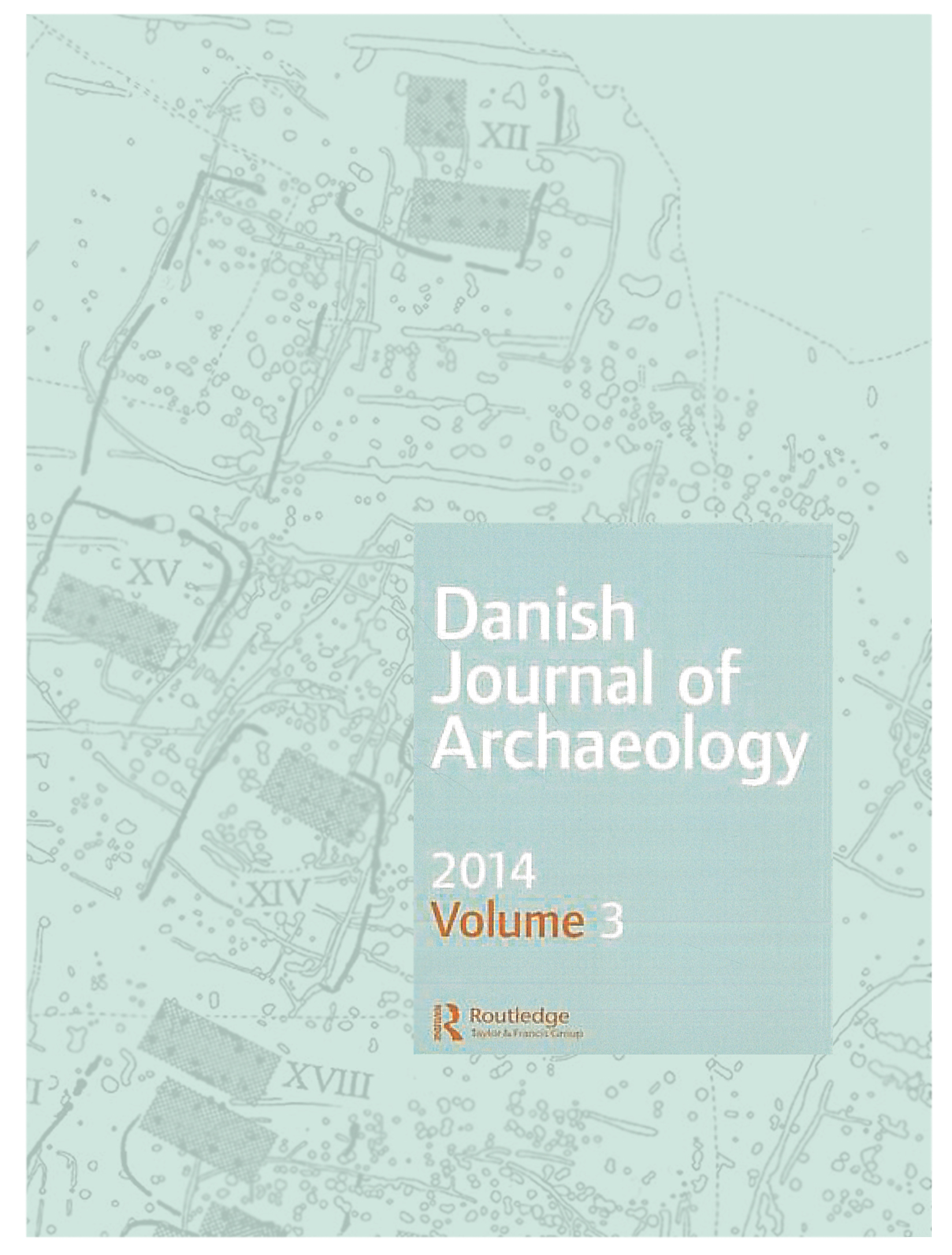Four churches and a lighthouse
preservation, ‘creative dismantling’ or destruction
DOI:
https://doi.org/10.1080/21662282.2013.910366Keywords:
heritage, preservation, destruction, creative dismantling, medieval church, modern lighthouse, cultural canonAbstract
A presentation and discussion of the heritage dilemmas, which appear, when the medieval churches of Mårup, Rubjerg, Lyngby and Furreby and the modern lighthouse of Rubjerg Knude in Northern Jutland, Denmark, all are threatened by
dunes, drifting sands and the North Sea. The churches of Rubjerg and Lyngby were taken down and rebuilt further inland in, respectively, 1904 and 1913–1914, while the church of Furreby is still functioning. The lighthouse is standing as a ruin
waiting to be taken down around 2020. The church of Mårup was made redundant, when a new church was built further inland in Lønstrup in 1926–1928.
A great dispute emerged on the future of Mårup, when it became threatened by increasing sea erosion in the 1980s. The church was investigated and partly taken down 2008 and 2011. The dispute on Mårup has been seen as a conflict between
nature and culture, periphery and centre, experience and knowledge – preservation and destruction. First, to understand the debate the author introduces the concept ‘creative dismantling’; a concept in between preservation and destruction. Second, the author argues that the unspoken core of the dispute has been the assumed irrelevance of the church to the national canon of art and history by all disputants. The creative dismantling lifted the church into the canon thereby creating a new, but also problematic consensus.
References
Arrhenius, T., 2003. The fragile monument. On conservation and modernity. Trita-ARK 2003: 5 Stockholm: Kungl Tekniska Högskolan.
Benjamin, W., 1982. Das Passagen-Werk. Edition Suhrkamp. Franfurt am Main: Suhrkamp, 1–2.
Bertelsen, T., 2009. Fra fattig landsbykirke til prestigebyggeri – nedtagningen af Mårup Kirke. Nationalmuseets Arbejdsmark, 2009, 71–90.
Burström, M., 2004. Archaeology and existential reflection. In: H. Bolin, ed. The interplay of past and present. Papers from a session held at the 9th annual EAA meeting in St. Petersburg 2003. Södertörn Archaeological Studies 1 Södertörn: Södertörns högskola, 21–28.
Clarke, K., 1928. The Gothic revival. An essay in the history of taste. London: Constable.
Edensor, T., 2005. Industrial ruins. Space, aesthetics and materiality. Oxford: Berg. https://doi.org/10.5040/9781474214940
Fernlund, S., 1982. “ett Herranom Värdigt Tempel”. Kyrkorivningar och kyrkobyggen i Skåne 1812–1912. Lund: Konstvetenskapliga institutionen.
Grandien, B., 1974. Drömmen om medeltiden. Carl Georg Brunius som byggmästare och idéförmedlare. Nordiska museets Handlingar 82 Stockholm: Nordiska museet.
Holst, K., 1984. Vor kirke skal ikke på museum. Politiken, 1 August 1984.
Holtorf, C., 2005. From Stonehenge to Las Vegas. Archaeology as popular culture. Walnut Creek: AltaMira Press.
Jensen, J., 1987. Lyngby kirkes flytning. Vendsyssel Årbog, 1987, 127–134.
Jörnmark, J., 2007. Övergivna platser. Lund: Historiska Media. Kulturkanon, København: Kulturministeriet & Politikens Forlag, 2006.
Petersson, B. and Wienberg, J., 2007. Time travelling. Between research and presentation at Hjerl Hede. In: B. Hårdh, K. Jennbert and D. Olausson, eds. On the road. Studies in honour of Lars Larsson. Acta Archaeologica Lundensia in 4°, No. 26. Stockholm: Almqvist & Wiksell International, 110–114.
Politiken, 29. December 2008: Mårup Kirke venter på havet.
Riber, A.A., 2004. Da Rubjerg Kirke blev flyttet i 1904. Vendsyssel Årbog, 2004, 87–102.
Schumpeter, J., 1912. Theorie der wirtschaftlige Entwicklung. Leipzig: Verlag von Dunker & Humblot.
Storm, A., 2008. Hope and rust. Reinterpreting the industrial place in the late 20th century. Stockholm Papers in the History and Philosophy of Technology, Trita-Hot-2057. Stockholm: Royal Institute of Technology, KTH.
Trap, P.J., 1960. Danmark. 5th ed. København: G. E. C. Gads forlag, VI(1).
Wienberg, J., 1993. Den gotiske labyrint. Middelalderen og kirkerne i Danmark. Lund studies in Medieval archaeology 11. Stockholm: Almqvist & Wiksell International.
Wienberg, J., 1999. The perishable past. On the advantage and disadvantage of archaeology for life. Current Swedish Archaeology, 7, 183–202.
Wienberg, J., 2006. Kirke, kulturarv og konflikt – Mårup på klinten. Hikuin, 33, 61–76.
Wienberg, J., 2007. Kanon og glemsel. Arkæologiens mindesmærker. Kuml. Årbog for Jysk arkæologisk Selskab, 2007, 237–282.
Wienberg, J., 2010. När Gud flyttar ut – ödekyrkor förr och nu. In: M. Dahlberg,T. Romberg and J. Wienberg, eds. Maglarp. Kyrkan som försvann. Studier till Sveriges kyrkor 3 Stockholm: Swedish National Heritage Board, 59–71.
Wienberg, J., in press. Historical archaeology in Sweden. European Journal of Post-Classical Archaeologies, 4.
Willim, R., 2008. Industrial cool. Om postindustriella fabriker. Lund: Lund University.
Downloads
Published
How to Cite
Issue
Section
License
Counting from volume 11 (2022), articles published in DJA are licensed under Attribution-NonCommercial-ShareAlike 4.0 International (CC BY-NC-SA 4.0). The editorial board may accept other Creative Commons licenses for individual articles, if required by funding bodies e.g. the European Research Council. With the publication of volume 11, authors retain copyright to their articles and give DJA the right to the first publication. The authors retain copyright to earlier versions of the articles, such as the submitted and the accepted manuscript.
Articles in volume 1-8 are not licensed under Creative Commons. In these volumes, all rights are reserved to DJA. This implies that readers can download, read, and link to the articles, but they cannot republish the articles. Authors can upload their articles in an institutional repository as a part of a green open access policy.
Articles in volume 9-10 are not licensed under Creative Commons. In these volumes, all rights are reserved to the authors of the articles respectively. This implies that readers can download, read, and link to the articles, but they cannot republish the articles. Authors can upload their articles in an institutional repository.





